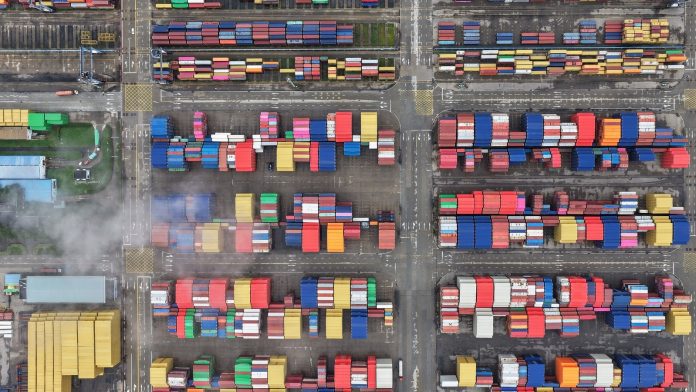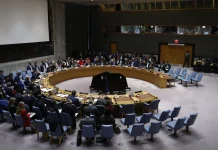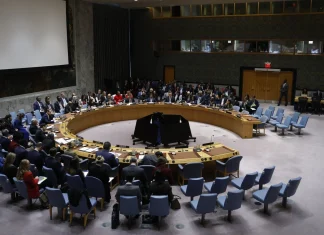
A Delicate Dance on the Global Stage: The Latest Pause in the US-China Trade War
Just when the world seemed to be bracing itself for the next round of economic skirmishes between the two largest economies on the planet, an unexpected moment of respite emerged. US President Donald Trump, in a move that surprised many observers, announced a delay in reimposing higher tariffs on Chinese goods, extending what some are cautiously calling a fragile truce in the long-standing trade tensions with China. This delicate juggling act unfolds not only as a showdown of economic muscle but as a story about the complex interdependence shaping our globalized world.
Trump’s Surprise Announcement and What It Means
It was on Trump’s own social media platform, Truth Social, that the news broke: the United States would not immediately escalate tariffs as previously scheduled. Instead, the hike would be paused until November 10th, effectively extending the current tariff hold that was set to expire any day now.
To the casual observer, this might seem a mere tactical delay — but beneath this postponement lies a rich tapestry of political jockeying, economic calculations, and strategic signaling.
The White House’s official release paints a broader picture. It acknowledges the “large and persistent annual US goods trade deficits” with China, portraying them as an extraordinary threat to the “national security and economy.” Yet, there’s an inkling of optimism as well, citing ongoing dialogues aimed at addressing the thorny issue of trade reciprocity. The message is clear: negotiations are hard-fought but alive.
China’s Calculated Response
Echoing this cautious optimism was China’s state-run media agency, Xinhua, publishing a joint statement from the recent US-China talks in Stockholm. China pledged to maintain its suspension of the tariff increase, holding steady on a 10% duty, while monitoring the continuation of mutual measures to reduce trade barriers beyond mere tariffs — a nod to non-tariff countermeasures that have shadowed the economic war.
William Yang, an insightful analyst at the International Crisis Group, offers a sobering note. “Beijing will be happy to keep the US-China negotiation going, but it is unlikely to make substantial concessions,” he says. Yang suspects China banks on rare earth mineral exports as a potent lever—a subtle yet potent reminder that the struggle extends beyond mere tariffs to the critical resources and strategic assets at the core of modern technology and defense.
The Stakes Behind the Numbers
The tariffs themselves are not just abstract economic policy tools; they ripple through industries and lives across continents. Since the trade wars escalated earlier this year, tariffs on Chinese goods rose into triple digits, throttling commerce and casting a shadow over multinational supply chains. The May truce saw these tariffs dialed back dramatically to 30% on the US side and 10% maintained by China, offering a brief breather for manufacturers, exporters, and consumers alike.
The stakes are enormous. According to the US-China Business Council, bilateral trade in goods alone topped $650 billion in 2023, with millions of jobs tied directly or indirectly to this commercial corridor. Sean Stein, president of the council, frames the truce’s extension as “critical”—not just a pause but a vital window for governments “to negotiate an agreement that provides much-needed certainty for businesses to plan accordingly.”
Yet the road ahead remains bumpy. Just last month, economic officials met again in Stockholm amidst complaints of violation of the previous pact. This back-and-forth signals a cautious dance rather than a clean break towards harmony.
Trade, Politics, and the Human Element
Trade wars can often feel like sterile battles of statistics and policy. But what about the lives touched by these decisions? In the farm fields of Iowa, where soybean exports to China once flourished, there is palpable hope mixed with anxiety. “If China quadruples its purchases of soybeans, like they say, that could mean a lifeline for our family farm,” says Lisa Andrews, a third-generation farmer near Des Moines. “We saw prices tank last year when the tariffs went up—it’s not just numbers on paper. It’s our livelihood.”
And it’s not only American farmers watching the trade winds. In Shenzhen, a bustling tech hub near Hong Kong, factories are bracing. An electronics assembly line supervisor asked not to be named admits, “Every new tariff round means supply chain headaches and unpredictability. It’s like playing business roulette.”
Complex Global Ripples
The new tariffs and reciprocal duties have not only rattled US-China relations. Since Trump’s return to the presidency in January, broader “reciprocal” tariffs have been imposed on many trading partners, including major economies like the European Union, Japan, and South Korea, which now face 15% US duties on numerous goods. Even Syria, far from the major players in global trade, sees tariffs climbing as high as 41%.
Some sectors have been spared with careful exemptions — gold being a notable example, despite recent confusion over policy clarifications. Trump’s assurances that gold imports would not face additional tariffs brought a sigh of relief to investors and jewelers alike.
Meanwhile, the trade landscape includes geopolitics beyond tariffs: Brazil’s tense trial of former president Jair Bolsonaro is putting it under US scrutiny, and India’s controversial purchase of Russian oil has invited a trade rebuke. Even close neighbors Canada and Mexico occupy different tariff regimes, reminding us that global trade is a patchwork quilt of alliances and frictions.
Reflecting on the Bigger Picture
Pause for a moment and consider: what does this tariff dance say about the broader world we live in? The US-China relationship is emblematic of a new era where economic power is wielded as geopolitical influence, and supply chains crisscross continents faster than the ink dries on policy documents.
Are these tariffs simply back-and-forth barbs in a larger strategic rivalry? Or are they symptomatic of deeper structural concerns—issues of fairness, security, and global economic balance? For businesses, the answer is both practical and philosophical: which path offers more stability in a world suddenly marked by trade turbulence.
For individual consumers and workers, the stakes might seem remote, yet they ripple into costs at the grocery store, the availability of electronics, and even job security.
One thing is certain: this precarious truce until November offers a rare opportunity. Will Washington and Beijing seize it, or will old antagonisms snap back into place once the clock strikes midnight?
To readers around the world—whether you’re pondering your next purchase, managing a business, or simply following global affairs—this story challenges us to think about interconnection. In the era of globalization, can two giants truly prosper apart? Or is it only through collaboration, however tense and contested, that durable progress will emerge?
In Closing: Trade Tensions as a Mirror to Our Times
This latest postponement is much more than a technical shift. It is a microcosm of the 21st century’s great contest: between protectionism and openness, competition and cooperation, national interests and global interdependence.
As the world watches, let’s not forget the human voices burned into this narrative—from farmers dreaming of expanded markets, to factory workers chasing stability, to policy makers navigating a labyrinth of economic and diplomatic choices. Their stories remind us that behind tariffs and trade figures lies a living, breathing world shaped by decisions made in distant capitals but felt in every corner of our interconnected planet.









